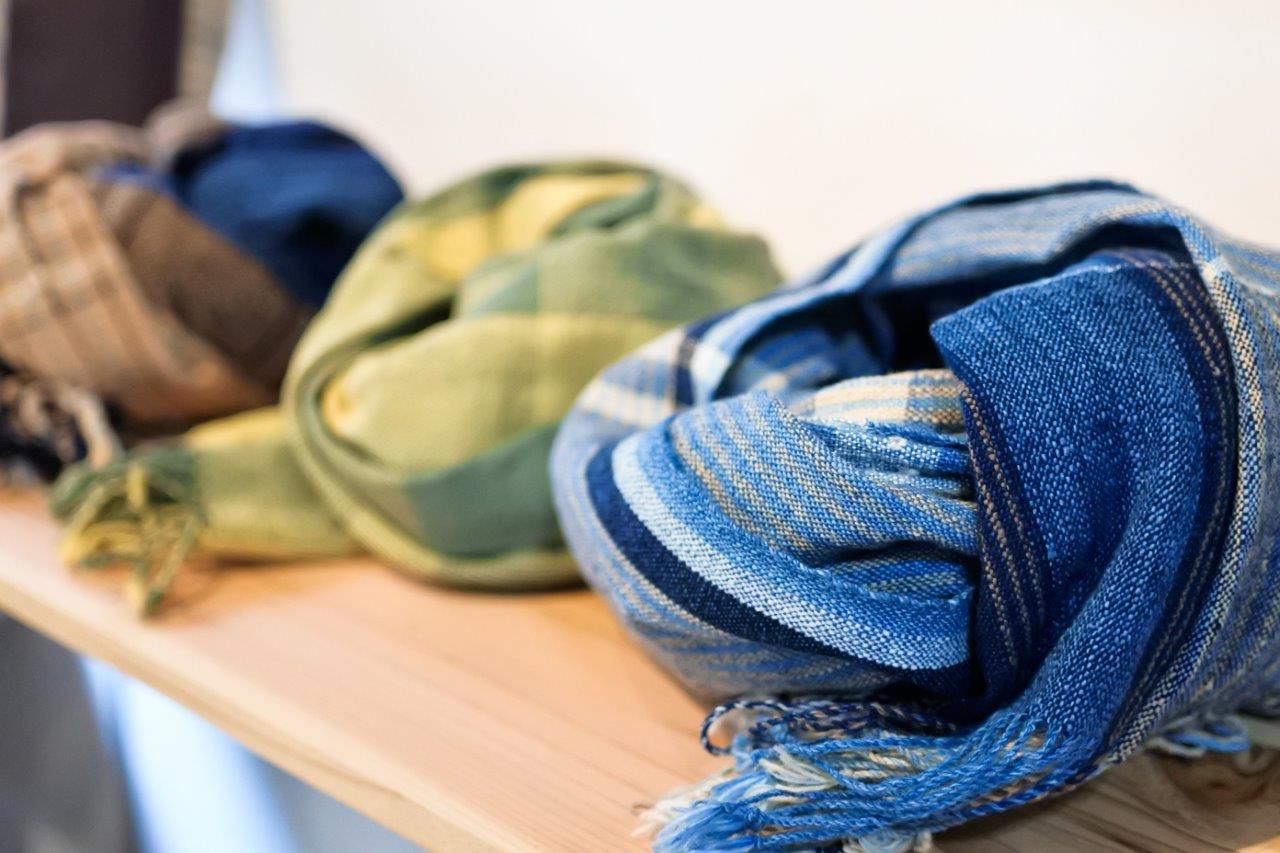JC21 Gallery
Please enjoy our gallery of Japanese Arts with brief descriptions in both English and Japanese. For more articles and in-depth commentary on the arts, we suggest you visit the Japan Living Arts blog, hosted by Steve Beimel.
Textiles
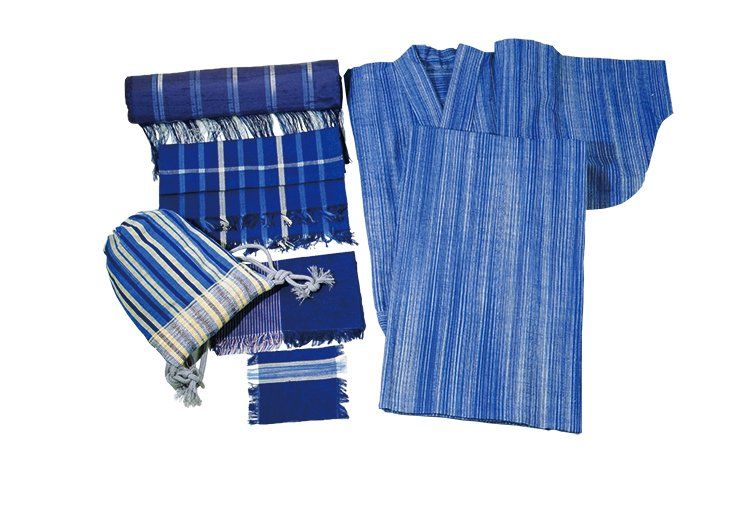
Banshu Yamasaki Aisome Ori is a woven fabric from Yamasaki Town in Shiso City, Hyogo Prefecture. Indigo dyeing was originally practiced in the Banshu area for a long time, but it has declined since the Meiji era. Yamasaki Aisome Ori was revived by Kunie Masaki almost in a self-taught manner under the guidance of a researcher in Tokushima where the dye originates. It was revived in 1978 and is now designated as a traditional craft of Hyogo Prefecture.

Kyofukuromono were bought as a souvenir by people who came to Kyoto during the Edo period. With the increased traffic of people around that time, it became popular as a gift to bring back from the city. Bags and cigarette cases made from fabrics such as Nishijinori and Kyoto Yuzen have gained popularity.
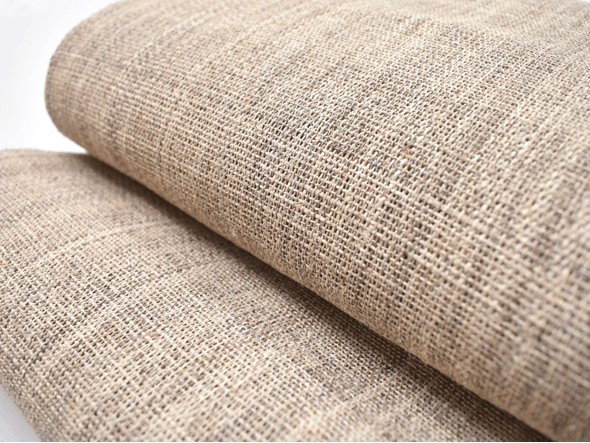
Tango Fujifu is a textile from Miyazu City on the Tango Peninsula in the northern part of Kyoto Prefecture. Fujifu is woven by making threads from the fibers of the wisteria skin that grows naturally in the mountains. Fujifu, an ancient Japanese textile, has a long history, and it is said that Fujifu was also mentioned in the oldest collection of Japanese poetry, Manyoshu written in 7 th century.
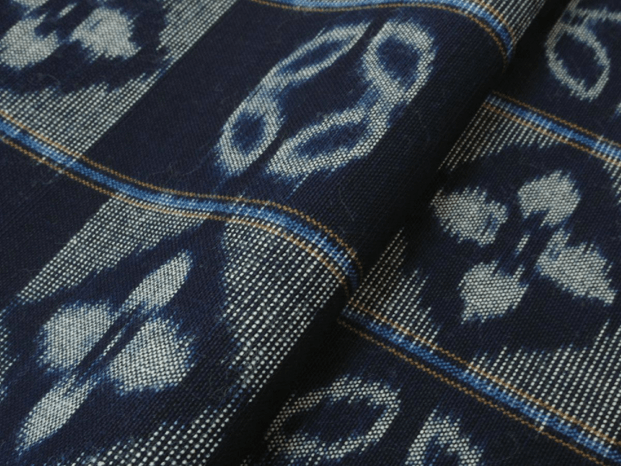
Kurayoshi Kasuri is a textile that has been passed down since the end of the Edo period in Kurayoshi City, Tottori Prefecture. Weaving using previously dyed yarn to express the pattern is called “Kasuri”, but in Kurayoshi, there were varieties of Kasuri weaving. These include Egasuri (picturesque pattern), more advanced Ayaori (twill weaving), and Ukiori (floating weaving) which were all Soshikiori (organized weaving). Such various Kasuri weavings were called “Fūtsūori” (wind blowing weaving) and it was considered very rare and precious.
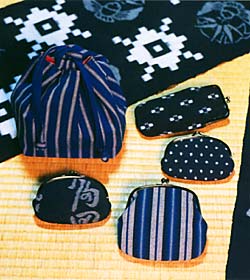
Hirose gasuri originates from the Edo period when Sadako Nagaoka, the wife of Kensho Nagaoka, a town doctor in Hirose-cho, Yasugi City, Shimane Prefecture, was taught the dyeing and weaving method of Kasuri in Yonago, Tottori Prefecture. The characteristic of Hirose gasuri is that it uses a unique paper pattern that is made by painting Japanese paper with persimmon tannin. The paper pattern is cut out and vertically enlarged to create a large combination of a picture and a geometric pattern.
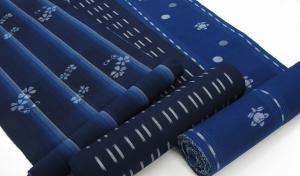
Traditional Resist-dyed textiles Teori Sakushu Kasuri is a cotton Kasuri from Tsuyama City in Okayama Prefecture. In the castle town of Tsuyama, high-quality silk fabrics have been woven since ancient times. In the Edo period, cotton cultivation began, and ordinary people’s clothing was woven with dark blue plain fabrics and striped fabrics dyed with hand-spun threads. The thick cotton thread makes the fabric durable and its feature is the simple indigo and white pattern.

Bingo gasuri is a Kasuri fabric manufactured in Fukuyama City, Hiroshima Prefecture. It is one of the three major Kasuri in Japan along with Iyo gasuri and Kurume gasuri. It is said that Bingo gasuri developed from kasuri, which was made by Kyusaburo Tomita, who lived in Ashida-cho, Fukuyama City at the end of the Edo period. Bingo gasuri was mainly woven with cotton, but it was also produced at times by adding silk and wool.
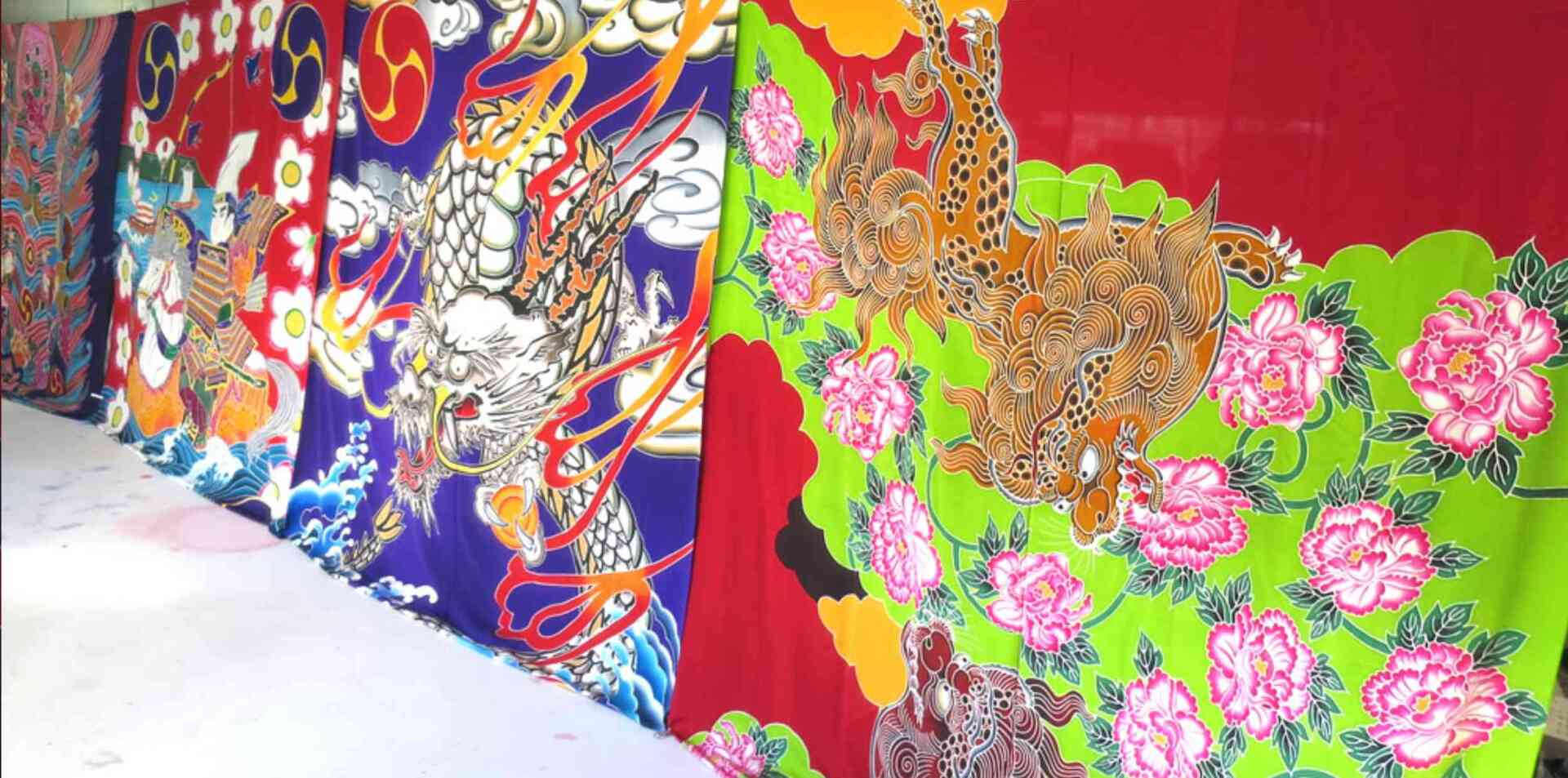
Sanuki nori zome is a dyed fabric from Kagawa Prefecture. The climate in Seto Inland Sea is said to be suitable for dyeing, and in the Edo period there were many dyers in Konyamachi near Takamatsu Castle. The dyeing method used is with a glue made of glutinous rice which is applied on a fabric patterned with a paper pattern. It prevents the dye from mixing with each other as the glue becomes resistant to the dye, creating a vivid color and pattern.
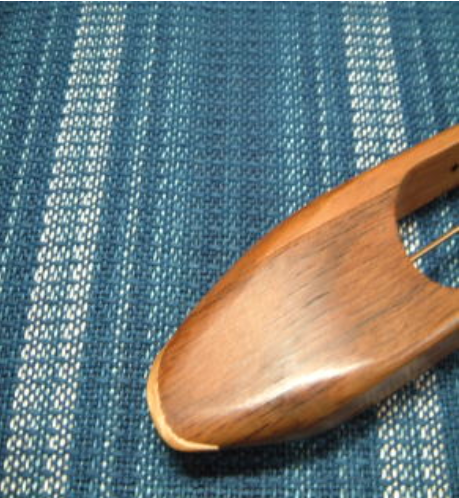
Botaori is a textile from Kagawa prefecture that has been passed down since the Edo period. The name Botaori comes from the meaning “lasting many years” because of its durability. In plain weave, the warp and weft threads are crossed one by one, however, Botaori is done with three rows in plain weave, followed by the fourth row with floating thread. The gap created by floating the thread contains air, feeling smooth and cool in the summer and warm on the skin in the winter.
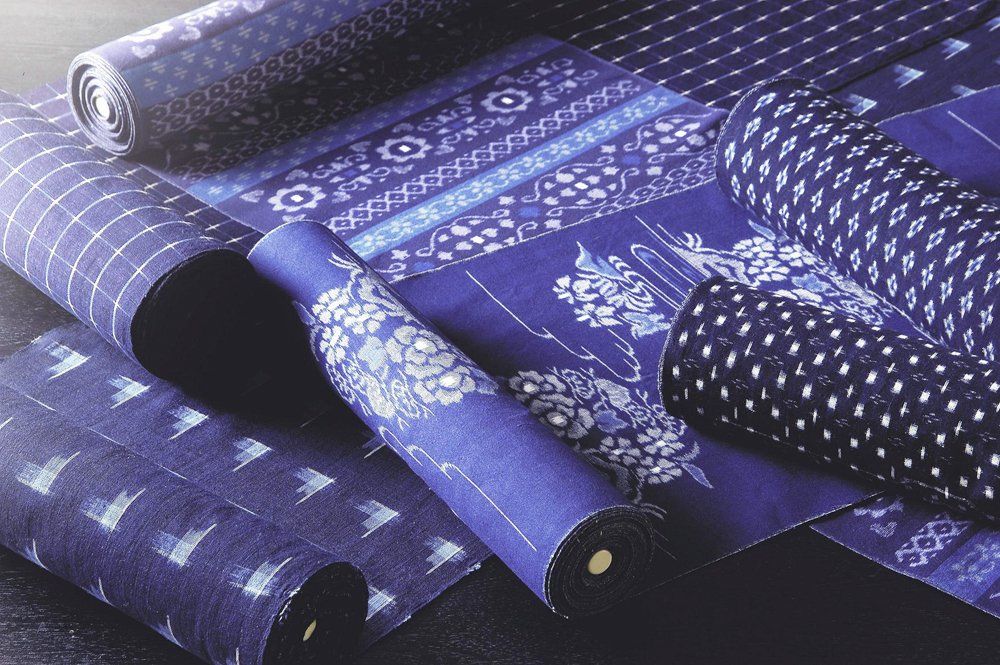
Iyo Kasuri is a Kasuri fabric (woven with warp threads and weft threads) from Matsuyama City in Ehime Prefecture. Iyo Kasuri is one of the three major Kasuri in Japan, along with Kurume gasuri and Bingo gasuri. It is woven with 100% cotton, and it’s known for its durability and its variety of patterns. Iyo Kasuri is famous for the rich variety of shades within the indigo color.
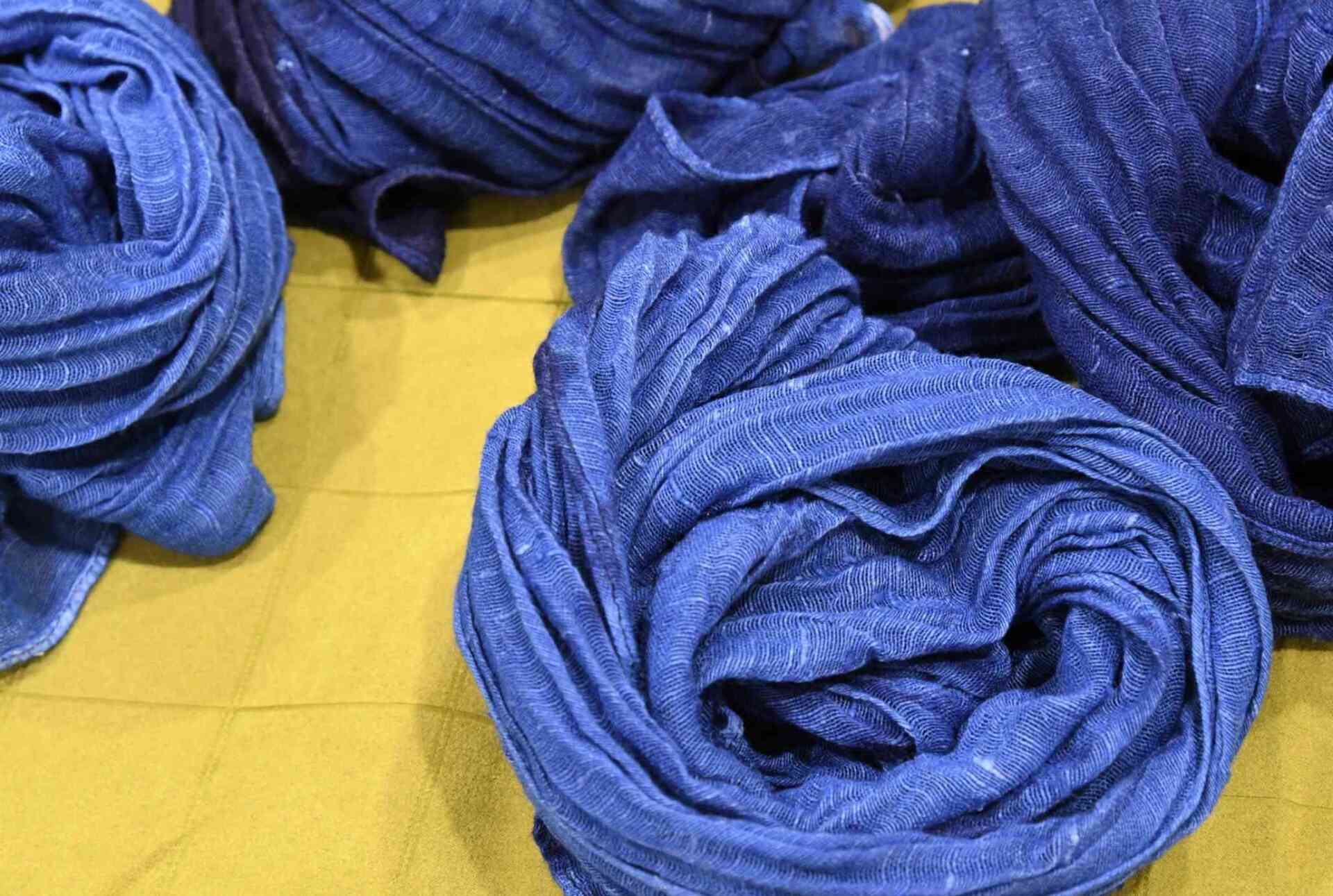
Hon Aizome uses a dyeing solution made by fermenting natural ingredients such as Sukumo, which is fermented leaves of Tadeai (Tade indigo), lye, and wheat gluten. Each piece is hand-dyed, however the difference with Sho Aizome is that it uses artificial dye including ingredients such as lime in the process.
Traditional Arts

Yano Kamoji is produced in Yano-cho, Aki-ku, Hiroshima City, Hiroshima Prefecture. Kamoji refers to hair piece or hair extensions used for hair styling, but in a broader term, it also includes wigs. Yano Kamoji was popularized nationwide at the end of the Taisho era due to the clay called higetsuchi, required for removing oil from the wig, was available in Yano-cho. Furthermore, plenty of water, which was necessary for washing these wigs, flowing from the valley through the town gave a perfect environment for Kamoji production in Yano-cho.

Mima’s wagasa (Japanese umbrella) is from Mima City in Tokushima Prefecture, which is also known as the “Wagasa no Sato” (Land of wagasa). Around the last year of Tensho era (1586), there were good materials in Mima for making umbrellas, such as bamboo and Japanese paper. Umbrella craftsmen from Mino in Gifu Prefecture were called for manufacture in Mima. Bamboo is used as the bone of an umbrella, with dyed Japanese paper, and it is finished with oil, decoration, and lacquer.
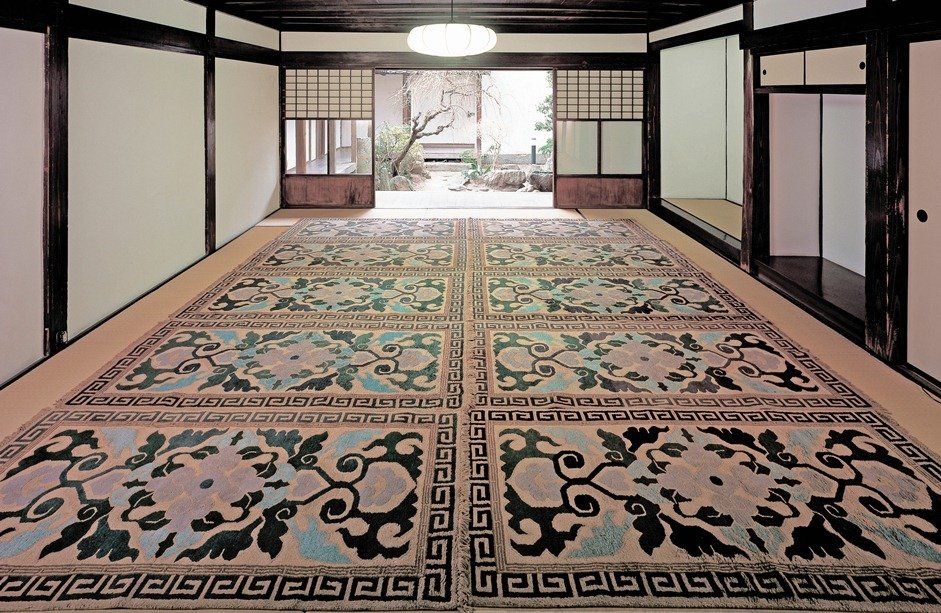
Nabeshima Dantsu is a traditional craft of Ogimachi in Saga City, Saga Prefecture. A farmer from Ogimachi called Kiyoemon Koga learned the technique of dantsu (carpet weaving) from Chinese people in Nagasaki in the early Edo period and wove it under the name of “Ogimachi Monsen (Ogimachi rug)”. This is the origin of Nabeshima Mantsuu, the most ancient cotton carpet weaving in Japan. Traditionally, it is hand-woven on a wooden loom made with cherry trees and pine trees, using high-quality cotton warp and weft thread.
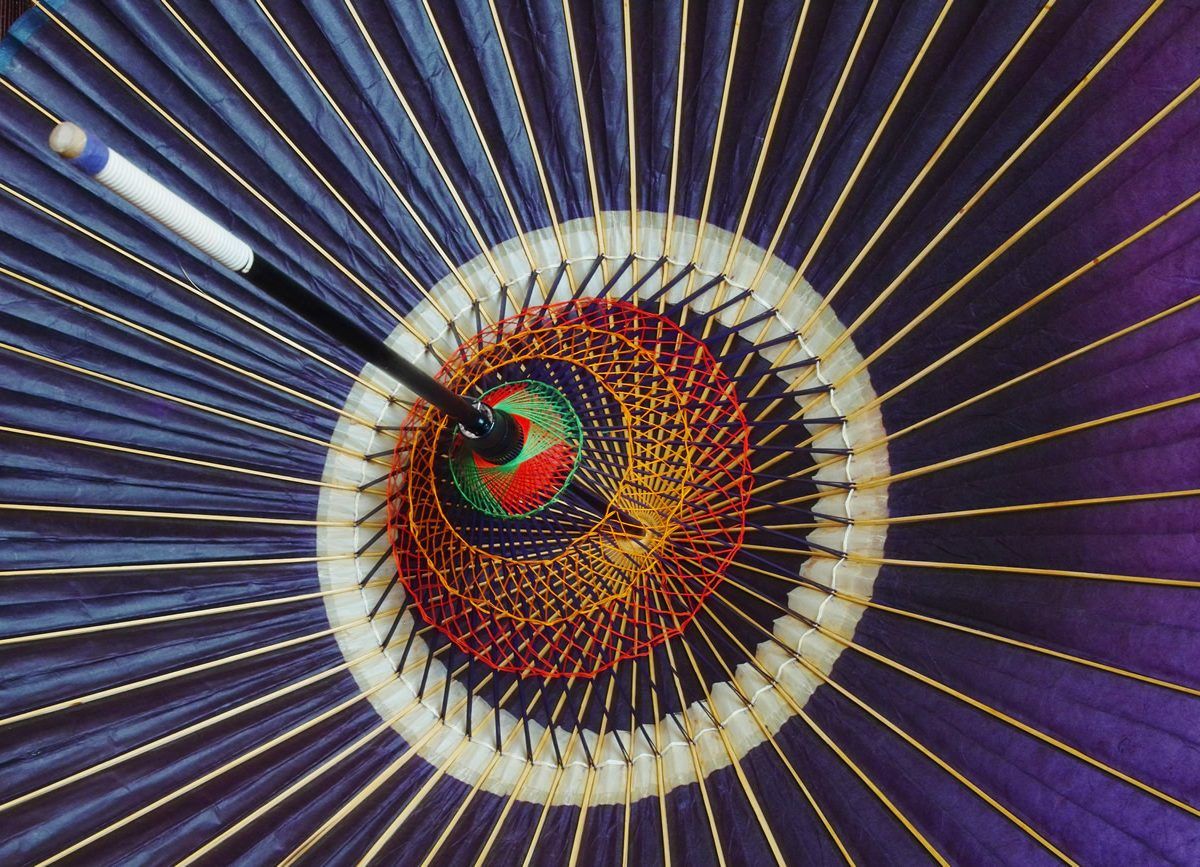
Chikugo Wagasa (Japanese umbrella) is a traditional craft from the Chikugo area of Fukuoka Prefecture, Kyushu. The origin of Chikugo Wagasa is said to have started when the priest of the local Hiyoshi Shrine started as a side business in the early Edo period. These beautiful and practical umbrellas are made using only Japanese natural materials such as bamboo, Japanese paper, lacquer, oil, glue, thread, and persimmon tannin, and it is crafted with more than 100 complicated processes. Matake, a type of bamboo, used for the bone and patterns, was available via the Chikugo River, and areas famous for Japanese paper and persimmon tannin were nearby, making it a major production area for Japanese umbrellas.
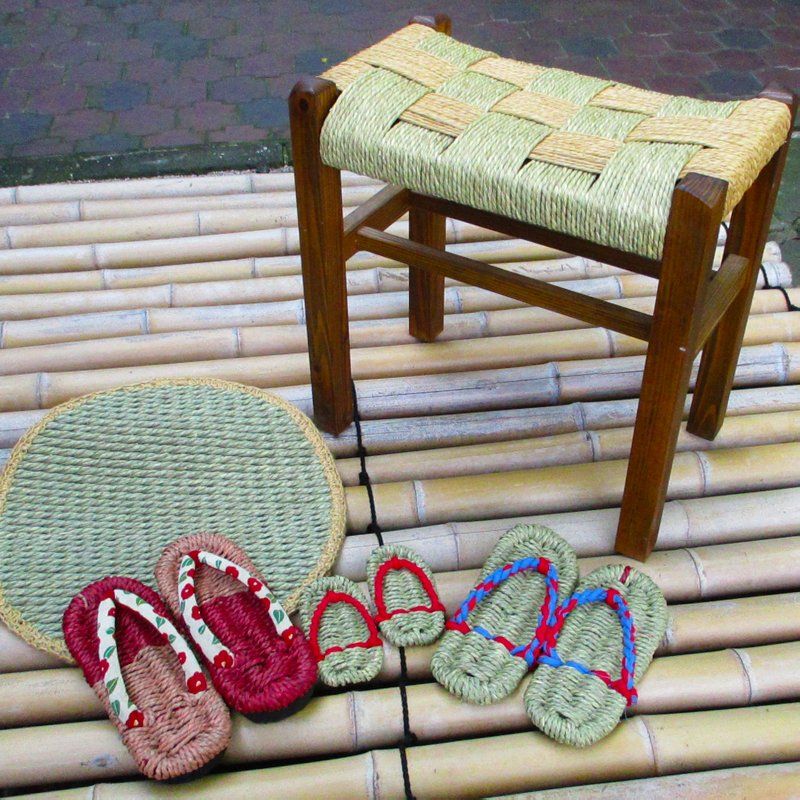
Igusa kogeihin (rush crafts) are crafts from Yatsushiro City in Kumamoto Prefecture, known as the number-one rush producing area in Japan. It is said that its origin is around 500 years ago when Tadahisa Iwasakishume acted as the castle lord of Agetsuchi Castle and encouraged the cultivation of rush in the territory. In addition to tatami mats and rugs, rush crafts include cushions, slippers, and slit curtain made by knitting them with rush ropes.




